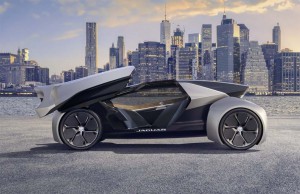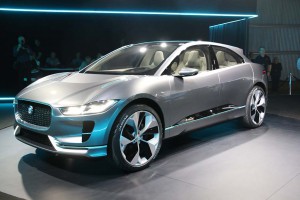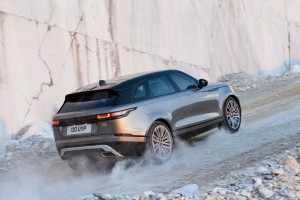Even before its first battery-electric vehicle hits market, Jaguar Land Rover says it will adopt an all-electric strategy starting in 2020, making it the third European brand to plan offering some form of battery-based option for all of its vehicles.
The process will begin late next year with the roll-out of the fully electric Jaguar I-Pace SUV. In 2020, the British-based, Indian-owned automaker says every Jaguar and Land Rover model will be offered with a hybrid, plug-in hybrid or pure battery-electric vehicle – or HEV, PHEV and BEV – option.
“We will introduce a portfolio of electrified products across our model range, embracing fully electric, plug-in hybrid and mild hybrid vehicles,” Chief Executive Ralf Speth said during the company’s “Tech Fest” event in London.
Automakers are coming under increasing pressure to electrify their product lines as governments around the world enact tougher emissions and mileage mandates. Britain, Norway, France and India are among those countries who have or expect to formally ban sales of new vehicles using internal combustion engines. Others, including Germany, are considering similar bans, while a number of cities in China have put in place restrictions meant to encourage sales of zero-emissions vehicles.
Virtually all automakers now have announced plans to add at least some battery-based models to their line-ups. Volvo delivered a shock when it announced all models would be electrified, in some form, starting with new products launched in 2018 and beyond. Earlier this week, Aston Martin CEO Andy Palmer told TheDetroitBureau.com that all of that exotic brand’s products will be offered with either conventional hybrid or BEV options “by the middle of the 2020s.”
JLR is a relative latecomer to electrification, until recently pushing diesel power as its solution to improving mileage. But, like many other European manufacturers, it has been forced to rethink that strategy in the wake of the Volkswagen diesel emissions crisis that has resulted in nearly $30 million in fines, settlements and other costs for the German automaker. VW itself now plans to offer dozens of HEV, PHEV and BEV models throughout its dozen retail brands, and is launching a distinct battery-electric sub-brand for products like I.D. Buzz electric microbus it announced last month.
(Jaguar hopes startup incubator accelerates tech development. For the story, Click Here.)
At the 2016 L.A. Auto Show, the Jaguar side of JLR announced its first big step into electrification with the unveiling of the I-Pace. It will be roughly the same size as the conventionally powered E-Pace sport-utility vehicle Jaguar will soon launch, but feature an interior about the size of what’s inside the much larger F-Pace SUV. That’s because the I-Pace places its batteries and keep electrical components under the load floor, freeing up space normally used for the engine compartment to use for passengers and cargo.
“Electrification gives us the opportunity to tear up the rulebook,” Ian Callum, Jaguar’s design director, said at the L.A. show. “It allows us freedom of design like never before.”
A senior JLR exec recently confided in TheDetroitBureau.com that the company is developing at least one more vehicle for the Jaguar brand that will specifically be based on the I-Pace platform. But others could follow, if the Jaguar Future-Type is any indication.
(Click Here for details about the debut of Jaguar’s E-Pace SUV.)
That’s a concept vehicle making its debut at the Tech Fest in London this week. Beyond its batter-electric drive, the vehicle is fully autonomous and features a removable voice-activated steering wheel, dubbed “Sayer,” that not only can program the car’s destination, but when brought into the home “knows what’s in your fridge and can even order your shopping or a pizza,” JLR said in a new release.
There are still plenty of skeptics who question the pace at which motorists in the U.S. and other parts of the world will adopt battery-powered vehicles. But proponents believe that even without government mandates demand will grow in the coming years. They point to new products that are more affordable, longer-range, easier to charge and which offer substantial improvements in performance.
The second-generation Nissan Leaf, introduced this week, nearly doubles the range of the original model that rolled out in 2010. It is almost 40% more powerful and adds an array of new, high-tech features, such as the semi-autonomous ProPilot Assist. Yet it comes in at $29,990 – before factoring in federal and state incentives.
(Click Here to check out Project 8, the “most extreme” Jaguar ever.)
Nissan is expecting to sell about 90,000 of the 2018 Leaf electrics. But Tesla is forecasting demand for its new entry product, the Model 3, will reach 400,000 next year, with its older Models S and X boosting total demand to 500,000. With all the various battery-based models now in the works, industry analysts predict, the technology is on the verge of moving from a green niche to part of the automotive mainstream.



